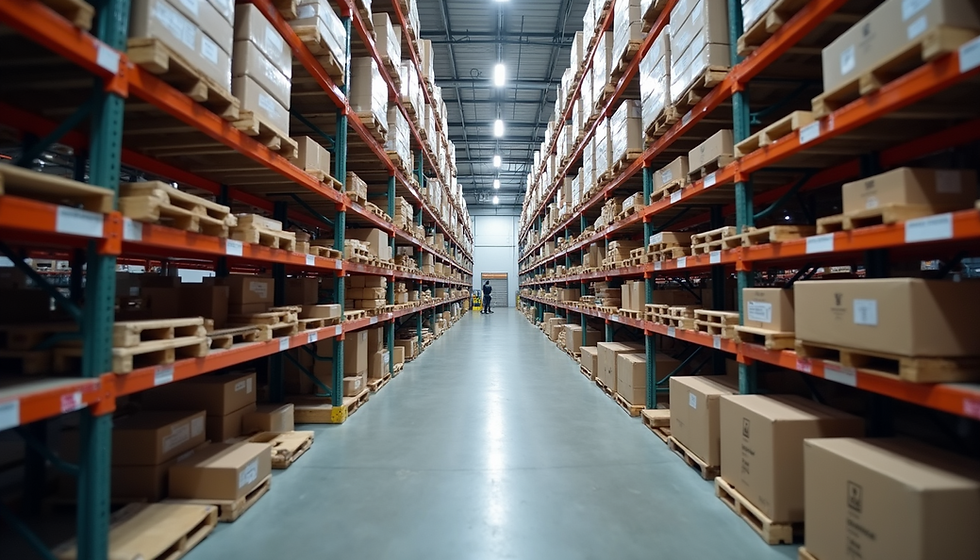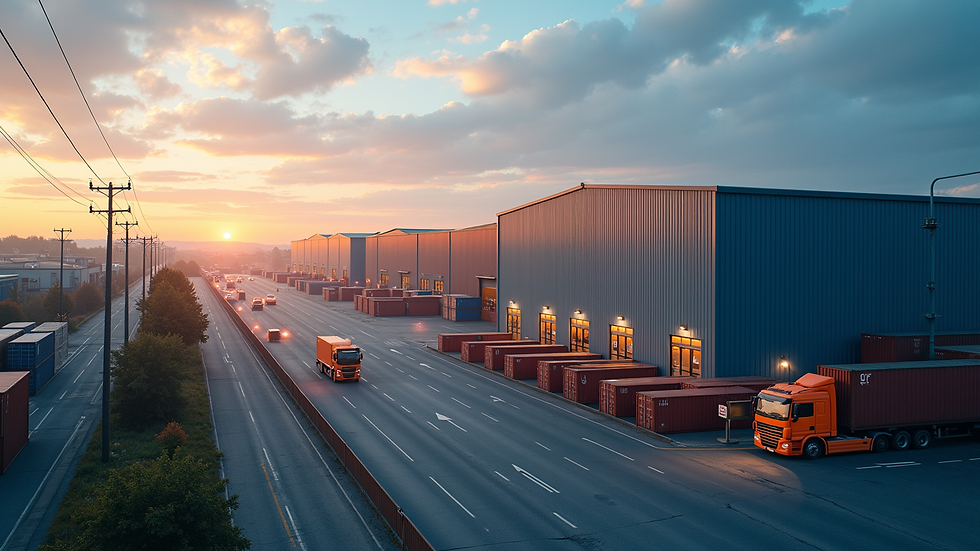3PL vs. In‑House Warehousing: Choosing What’s Right for You
- jass karan
- Aug 11
- 4 min read
In today's fast-paced business environment, how efficiently a company manages its supply chain can make or break its success. One of the most critical decisions business leaders face is whether to partner with a third-party logistics provider (3PL) or to manage warehousing in-house. Each option has its own benefits and challenges, and this blog post breaks them down to help business owners, CFOs, and logistics leads make well-informed decisions.
Understanding 3PL
Third-party logistics, or 3PL, is the practice of outsourcing logistics and warehousing functions to specialized service providers. This approach has become increasingly popular among businesses aiming to streamline operations and reduce costs.
By choosing a 3PL provider, companies gain access to extensive logistics networks, advanced technologies, and seasoned professionals. According to industry reports, using 3PL services can reduce logistics costs by 10-30% due to economies of scale and efficient resource utilization. This allows businesses to focus their resources on core activities rather than getting bogged down in logistical challenges.
One of the standout benefits of working with 3PL providers is scalability. For instance, retailers may see a 50% increase in warehouse space needed during holiday seasons. Opting for a 3PL allows them to adjust their storage capacity without heavy investments. This flexibility is crucial for companies facing fluctuating demand or rapid growth.
Pros of 3PL
Cost Efficiency: Utilizing a 3PL can lower overhead costs significantly. Businesses can save on staff salaries, utilities, and facility maintenance which can amount to thousands of dollars per month.
Expertise and Technology: Many 3PLs implement the latest technology in inventory management, which can improve accuracy and speed. For example, automated systems can reduce order processing time by up to 20%.
Focus on Core Business: By outsourcing logistics, companies can redirect their energy towards innovation and customer service, fostering overall growth and productivity.
Cons of 3PL
Loss of Control: Outsourcing logistics may lead to a lack of direct oversight, which can impact service quality. For example, issues like shipment delays may not be immediately addressed.
Communication Challenges: Miscommunication with external providers can arise, especially if expectations aren't clearly set and managed from the beginning.
Cost Fluctuations: Hidden costs, such as fuel surcharges or unexpected service fees, can arise, sometimes causing budgets to exceed initial projections.

Understanding In-House Warehousing
On the other hand, in-house warehousing means that a business manages all logistics and storage functions internally. This option is often attractive to companies that prioritize complete control over their operations.
Managing warehousing in-house allows for rigorous monitoring of inventory levels. For instance, companies with perishable goods, such as food products, may choose in-house operations to ensure proper handling and storage conditions. About 30% of companies dealing with perishable goods prefer this method to maintain freshness and minimize waste.
In-house warehousing also enables businesses to fine-tune processes according to their specific needs, which can enhance overall efficiency and responsiveness. Companies can adapt processes quickly, such as adjusting temperature controls for sensitive items or customizing layout for optimized picking and packing.
Pros of In-House Warehousing
Complete Control: Companies have direct oversight of all warehousing activities, making it easier to customize operations to meet precise needs.
Customization: In-house operations can be tailored to suit unique inventory requirements, which is vital for specialized products like electronics or pharmaceuticals.
Direct Customer Engagement: Businesses can strengthen their customer relationships by providing personalized service and quick responses to inquiries or issues.
Cons of In-House Warehousing
High Initial Investment: Setting up an in-house warehouse can involve significant costs, with averages ranging from $500,000 to $1 million. This includes infrastructure, technology, and staffing.
Limited Scalability: Companies may find it challenging to scale operations quickly, especially during peak periods. This can lead to lost revenue opportunities.
Operational Complexity: In-house management requires specialized knowledge in logistics and warehousing operations, necessitating ongoing staff training, which can be resource-intensive.

Key Considerations When Choosing Between 3PL and In-House Warehousing
When making the choice between 3PL and in-house, businesses should take into account several factors that can influence their decision:
Business Size and Projected Growth
The scale of the business and growth plans are critical to the warehousing strategy. Smaller businesses or those with rapid growth may find more freedom and effectiveness with a 3PL provider. In contrast, larger companies with steady inventory might benefit from the control and customization provided by in-house operations.
Product Type
The nature of the product being stored can greatly affect the decision. For instance, companies dealing with fragile or specialized items often prefer in-house warehousing. However, businesses with extensive product selections may find that 3PLs are better suited to manage varying inventory demands efficiently.
Cost Analysis
It is crucial to conduct a thorough cost evaluation, taking into account both short-term and long-term financial impacts. For example, while 3PLs may have variable costs, in-house warehouses require continuous investment, which can accumulate over time.
Customer Expectations
Understanding what customers expect is vital. Businesses willing to prioritize speed and efficiency often find 3PLs advantageous, given their established logistics infrastructure. Conversely, if personalized service is what your brand stands for, in-house warehousing may be the better fit.
Making the Right Choice
Selecting between 3PL and in-house warehousing requires thoughtful evaluation. Considerations such as cost, control, scalability, and customer focus will influence the best choice for your business. Understanding the advantages and drawbacks of both options is crucial for maximizing logistics efficiency.
With the correct approach, businesses can create a solid logistics strategy that not only meets current demands but also positions them for future success.

_edited.jpg)



Comments